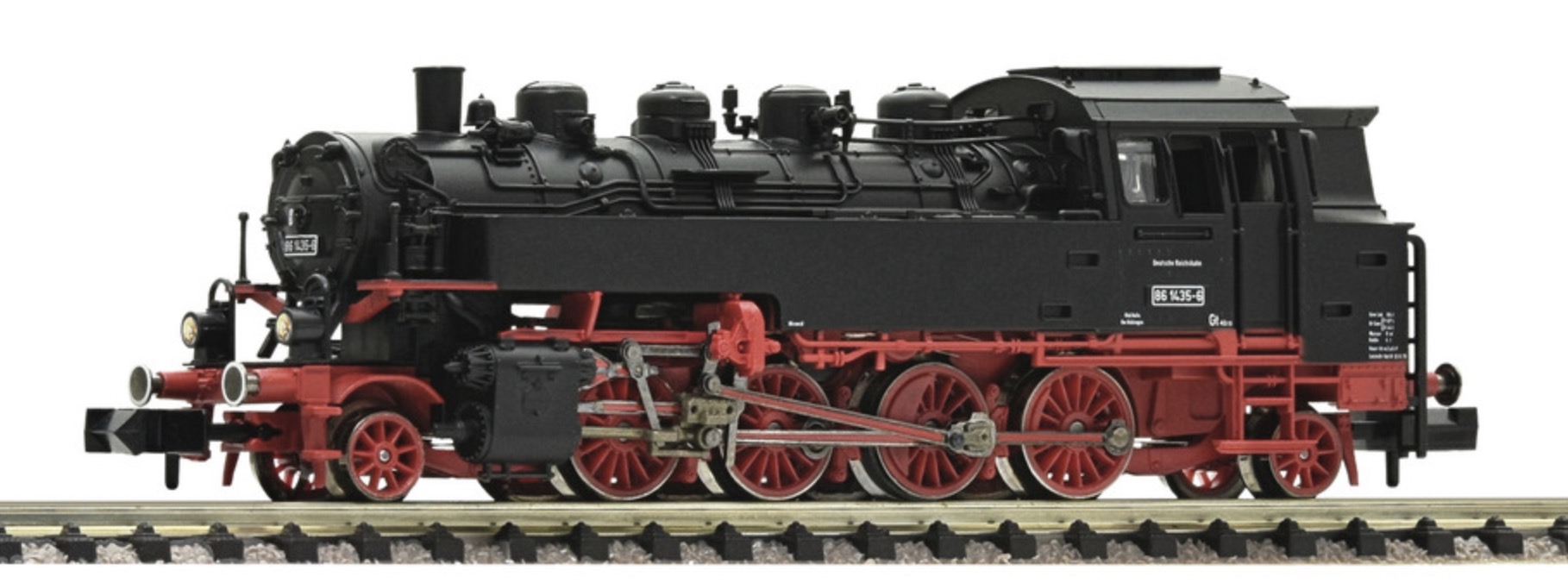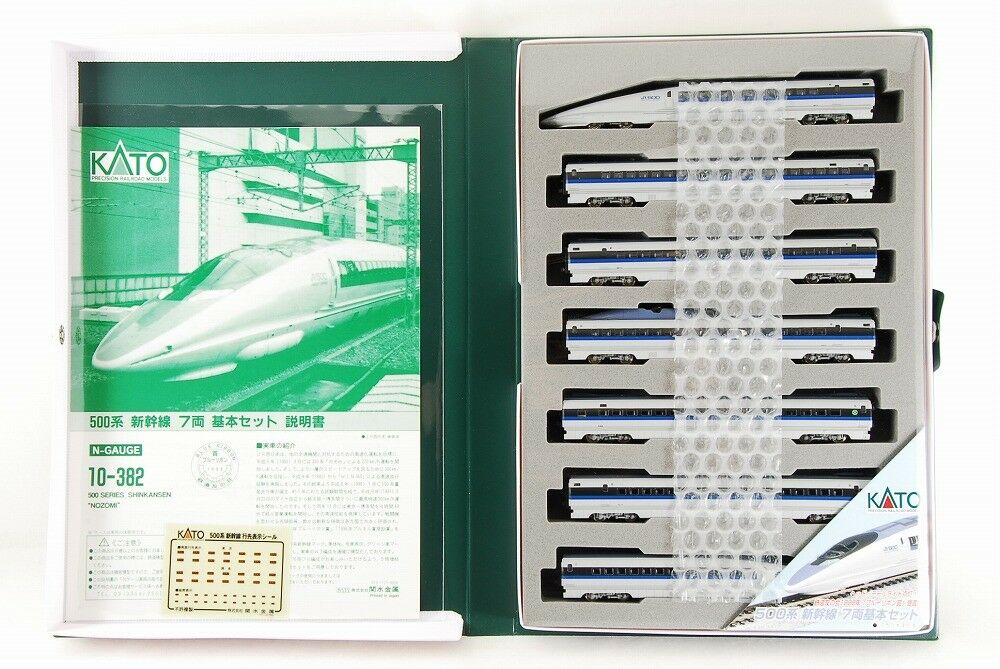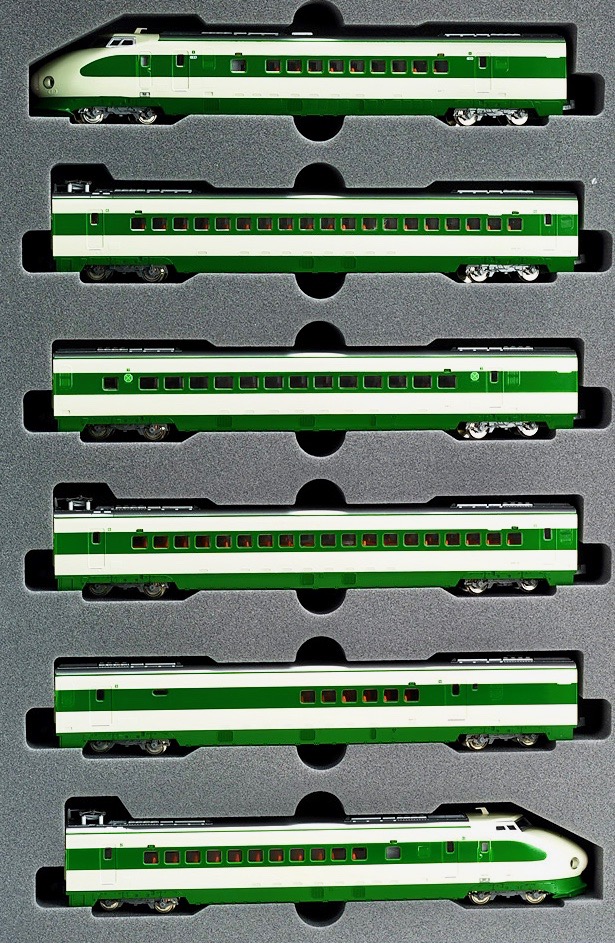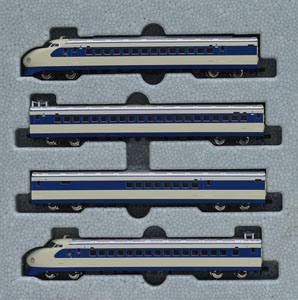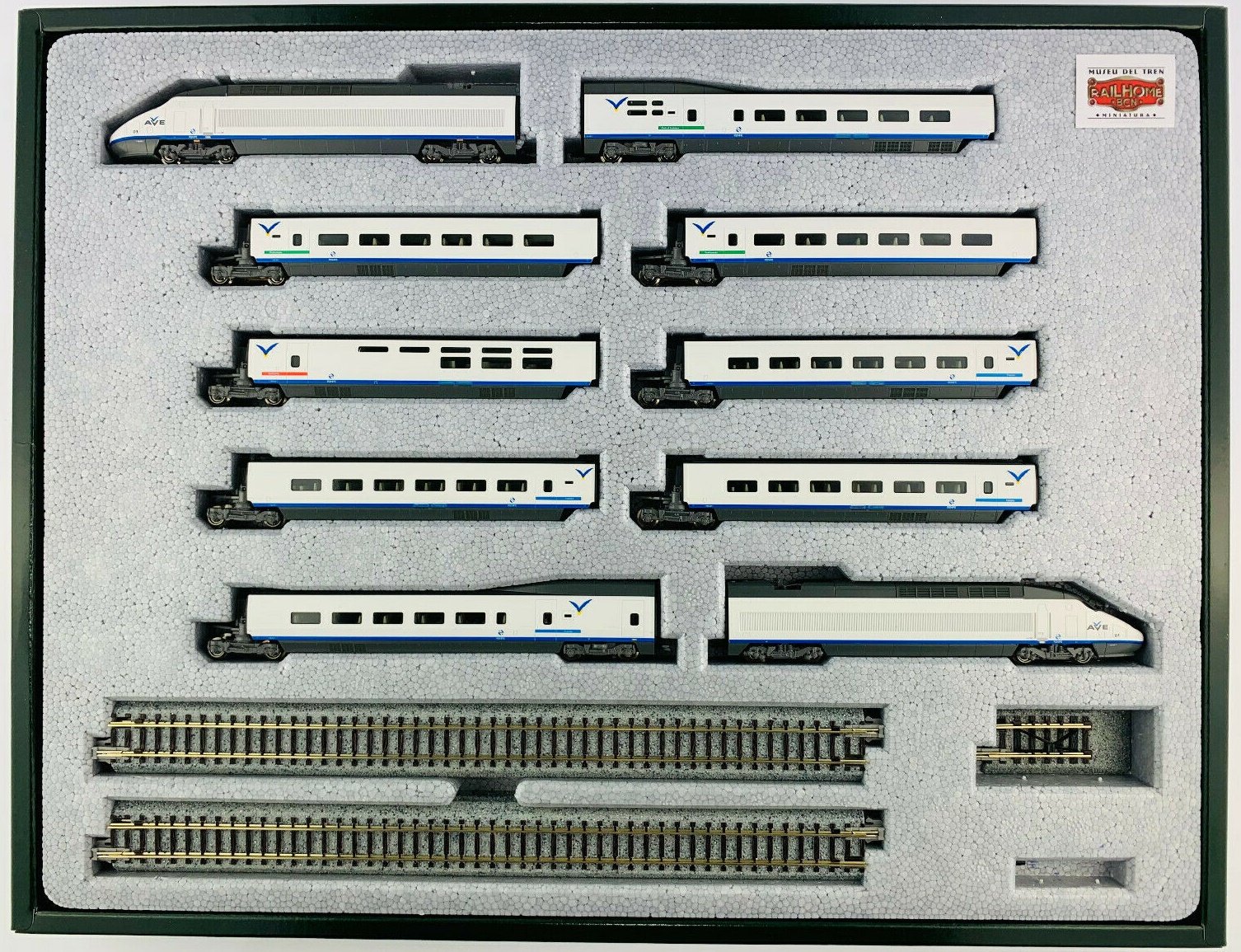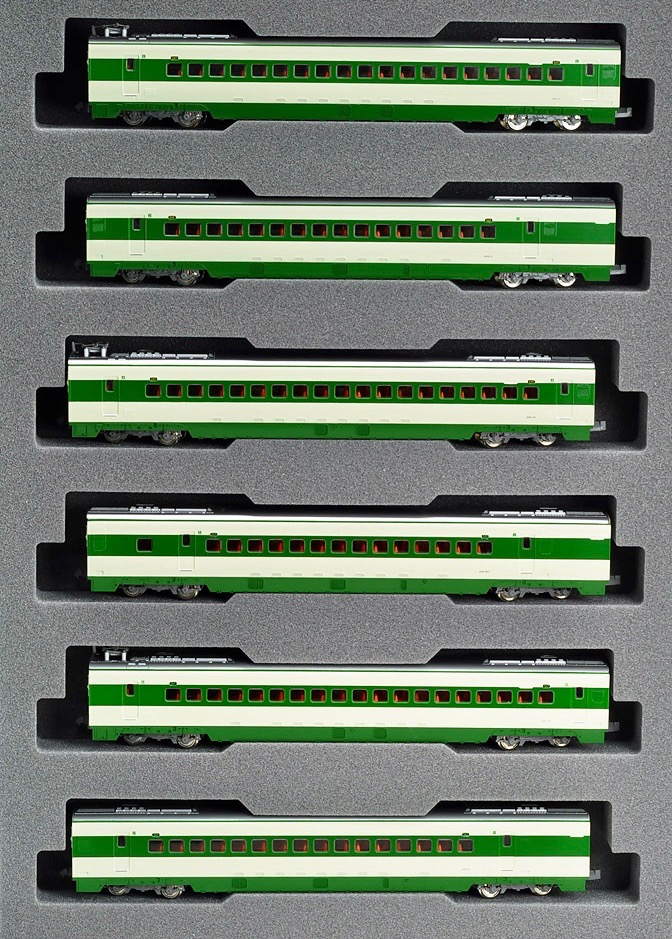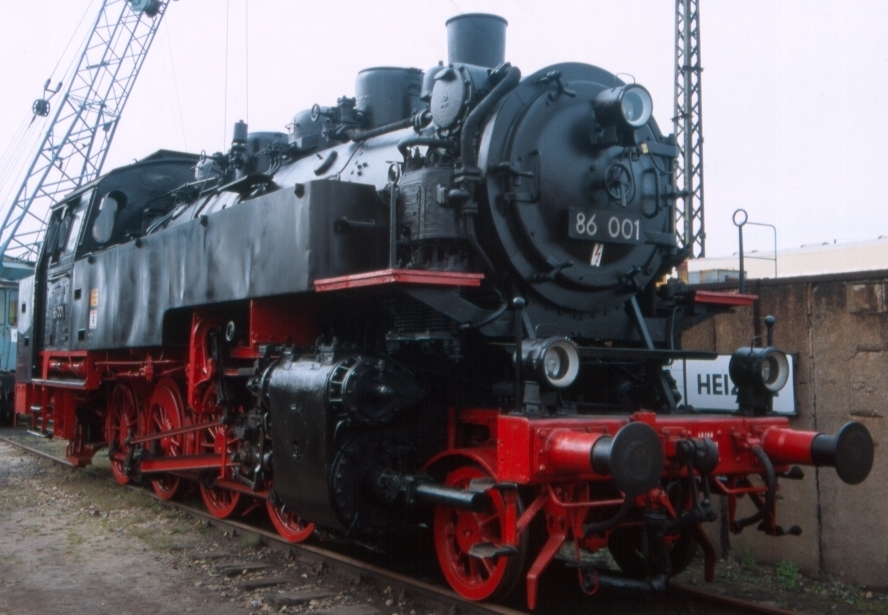Fleischmann - 708704 - Locomotive, Steam, 2-8-2, BR 86 - Deutsche Reichsbahn - 86 1435-6
| Stock Number | 708704 |
| Original Retail Price | 224.90€ |
| Brand | Fleischmann |
| Manufacturer | Fleischmann |
| Body Style | Fleischmann Steam Engine Class 86 |
| Prototype Vehicle | Locomotive, Steam, 2-8-2, BR 86 (Details) |
| Road or Company Name | Deutsche Reichsbahn (Details) |
| Reporting Marks | DR |
| Road or Reporting Number | 86 1435-6 |
| Paint Color(s) | Black and Red |
| Print Color(s) | White |
| Coupler Type | Rapido Hook NEM Standard Pocket |
| Coupler Mount | Body-Mount |
| Wheel Type | Nickel-Silver Plated Metal |
| Wheel Profile | Deep Flange |
| DCC Readiness | Ready |
| Item Category | Locomotives |
| Model Type | Steam |
| Model Subtype | BR |
| Model Variety | 86 |
| Prototype Region | Europe |
| Prototype Era | EU Epoch II (1920 - 1945) |
| Years Produced | 1928 - 1943 |
| Scale | 1/160 |
Prototype History:
The DRG Class 86 was a standard (see Einheitsdampflokomotive) goods train tank locomotive with the Deutsche Reichsbahn-Gesellschaft. It was intended for duties on branch lines and was delivered by almost all the locomotive building firms working for the Reichsbahn. From 1942 it was built in a simplified version as a 'transitional war locomotive' (Übergangskriegslokomotive or ÜK). The most obvious changes were the omission of the second side windows in the cab and the solid disc carrying wheels.
Almost all German locomotive factories took part in building these engines, 775 examples being produced in the period from 1928 to 1943. Its area of operations was predominantly the routes in Germany's central mountains (Mittelgebirge); as a result the first 10 units were given a Riggenbach counter-pressure brake. Twenty locomotives were destroyed during the Second World War; lightly damaged engines were repaired. Of the original 775 units, 175 went to the GDR railways, 385 to the Deutsche Bundesbahn, 29 to the Austrian Federal Railways (ÖBB), 44 to the PKP in Poland as the Class TKt3, 73 to the SZD and 62 to the CSD (6 of which later went to the SZD and 86 043 in 1958 to the GDR). On the last-mentioned 62 engines 28 became the CSD Class 455.2. Only 2 engines are still unaccounted for (86 016 and 86 469). The ÖBB began to retire them as early as 1945, but the last did not retire until 1972. However the Austrian engines had some of the most spectacular duties, including working double-headed on heavy, empty, ore trains with a DRB Class 52.
Almost all German locomotive factories took part in building these engines, 775 examples being produced in the period from 1928 to 1943. Its area of operations was predominantly the routes in Germany's central mountains (Mittelgebirge); as a result the first 10 units were given a Riggenbach counter-pressure brake. Twenty locomotives were destroyed during the Second World War; lightly damaged engines were repaired. Of the original 775 units, 175 went to the GDR railways, 385 to the Deutsche Bundesbahn, 29 to the Austrian Federal Railways (ÖBB), 44 to the PKP in Poland as the Class TKt3, 73 to the SZD and 62 to the CSD (6 of which later went to the SZD and 86 043 in 1958 to the GDR). On the last-mentioned 62 engines 28 became the CSD Class 455.2. Only 2 engines are still unaccounted for (86 016 and 86 469). The ÖBB began to retire them as early as 1945, but the last did not retire until 1972. However the Austrian engines had some of the most spectacular duties, including working double-headed on heavy, empty, ore trains with a DRB Class 52.
Road Name History:
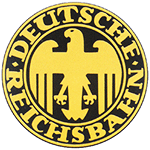 The Deutsche Reichsbahn, also known as the German Reich Railway or the German Imperial Railway, was the name of the German national railway created from the railways of the individual states of the German Empire following the end of World War I.
The Deutsche Reichsbahn, also known as the German Reich Railway or the German Imperial Railway, was the name of the German national railway created from the railways of the individual states of the German Empire following the end of World War I.
The company was founded in 1920 as the Deutsche Reichseisenbahnen when the Weimar Republic, formally known as Deutsches Reich (German Reich, hence the usage of the Reich in the name of the railway), took national control of the German railways, which had previously been run by the German states. In 1924 it was reorganised under the aegis of the Deutsche Reichsbahn-Gesellschaft (DRG), a nominally private railway company, which was 100% owned by the German state. In 1937 the railway was reorganised again as a state authority and given the name Deutsche Reichsbahn (DRB). After the Anschluss in 1938 the DR also took over the Bundesbahn Osterreich (BBO, Federal Railway of Austria).
The East and West German states were founded in 1949. East Germany took over the control of the DR on its territory and continued to use the traditional name Deutsche Reichsbahn, while the railway in West Germany became the Deutsche Bundesbahn (DB, German Federal Railway). The Austrian Osterreichische Bundesbahnen (OBB, Austrian Federal Railways) was founded in 1945, and was given its present name in 1947.
In January 1994, following the German union, the East German Deutsche Reichsbahn merged with the West German Deutsche Bundesbahn to form Germany's new national carrier, Deutsche Bahn AG, technically no longer a government agency but still a 100% state-owned joint stock company.

The company was founded in 1920 as the Deutsche Reichseisenbahnen when the Weimar Republic, formally known as Deutsches Reich (German Reich, hence the usage of the Reich in the name of the railway), took national control of the German railways, which had previously been run by the German states. In 1924 it was reorganised under the aegis of the Deutsche Reichsbahn-Gesellschaft (DRG), a nominally private railway company, which was 100% owned by the German state. In 1937 the railway was reorganised again as a state authority and given the name Deutsche Reichsbahn (DRB). After the Anschluss in 1938 the DR also took over the Bundesbahn Osterreich (BBO, Federal Railway of Austria).
The East and West German states were founded in 1949. East Germany took over the control of the DR on its territory and continued to use the traditional name Deutsche Reichsbahn, while the railway in West Germany became the Deutsche Bundesbahn (DB, German Federal Railway). The Austrian Osterreichische Bundesbahnen (OBB, Austrian Federal Railways) was founded in 1945, and was given its present name in 1947.
In January 1994, following the German union, the East German Deutsche Reichsbahn merged with the West German Deutsche Bundesbahn to form Germany's new national carrier, Deutsche Bahn AG, technically no longer a government agency but still a 100% state-owned joint stock company.
Brand/Importer Information:
As a high-quality company we set the standard when it comes to prototype fidelity and functionality. Our aim is to enthrall novices and experts alike and to be the enduring long-term partner for a fascinating hobby that spans all generations. We achieve this with the true-to-detail design and the reliability of our models and with innovations that offer a new dimension in the play value and fun factor. The high commitment to quality that has characterised Fleischmann for more than 125 years has ensured our company?s position as an internationally leading brand for model railways.
Small-scale greatness. Its comprehensive range in the N scale makes Fleischmann the international market leader in this sector. There are over 350 highly detailed models to choose from in the space-saving 9-mm gauge. Continuous and targeted extension of the range will allow Fleischmann to expand its competitive edge in the future.
Small-scale greatness. Its comprehensive range in the N scale makes Fleischmann the international market leader in this sector. There are over 350 highly detailed models to choose from in the space-saving 9-mm gauge. Continuous and targeted extension of the range will allow Fleischmann to expand its competitive edge in the future.
Item created by: CNW400
on 2024-06-25 21:27:53
If you see errors or missing data in this entry, please feel free to log in and edit it. Anyone with a Gmail account can log in instantly.
If you see errors or missing data in this entry, please feel free to log in and edit it. Anyone with a Gmail account can log in instantly.


